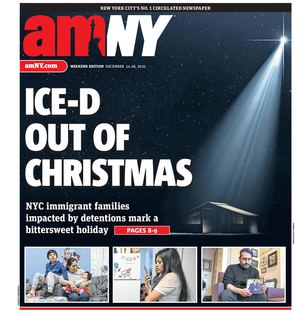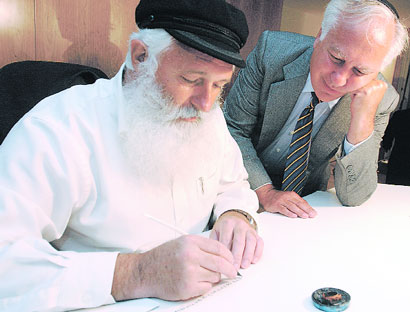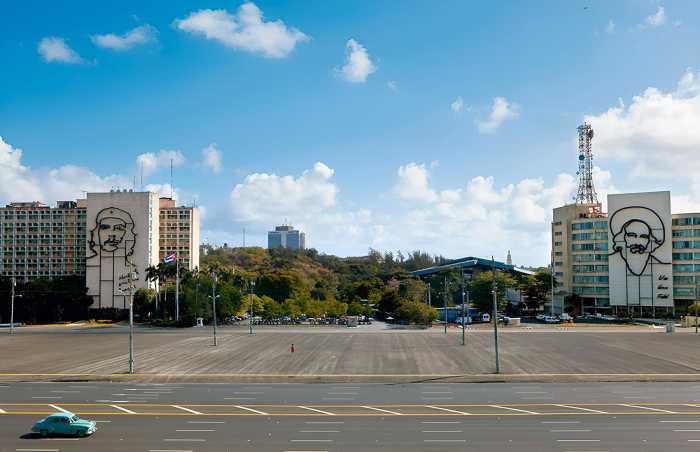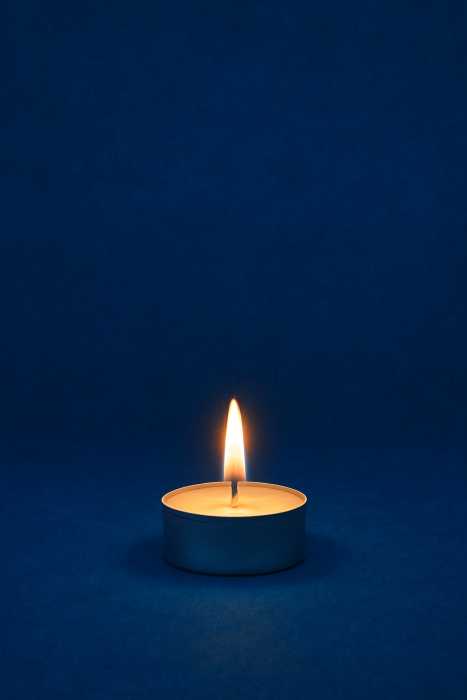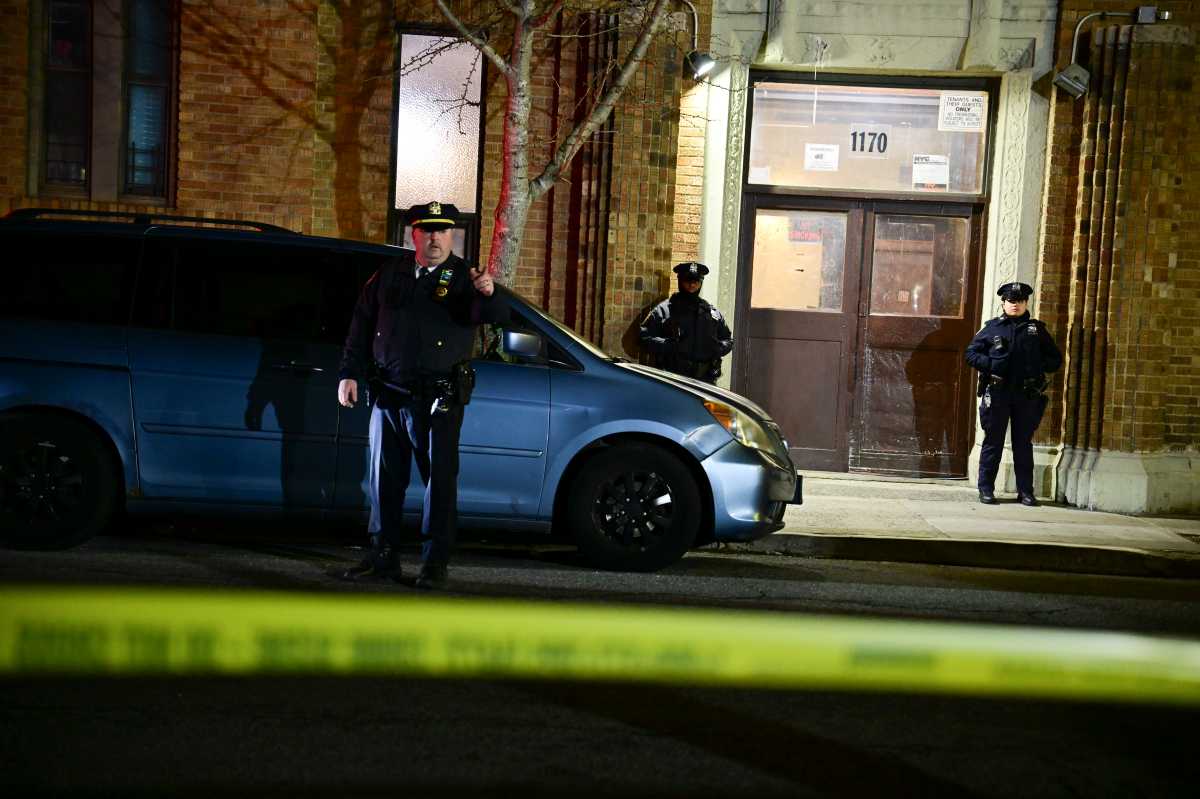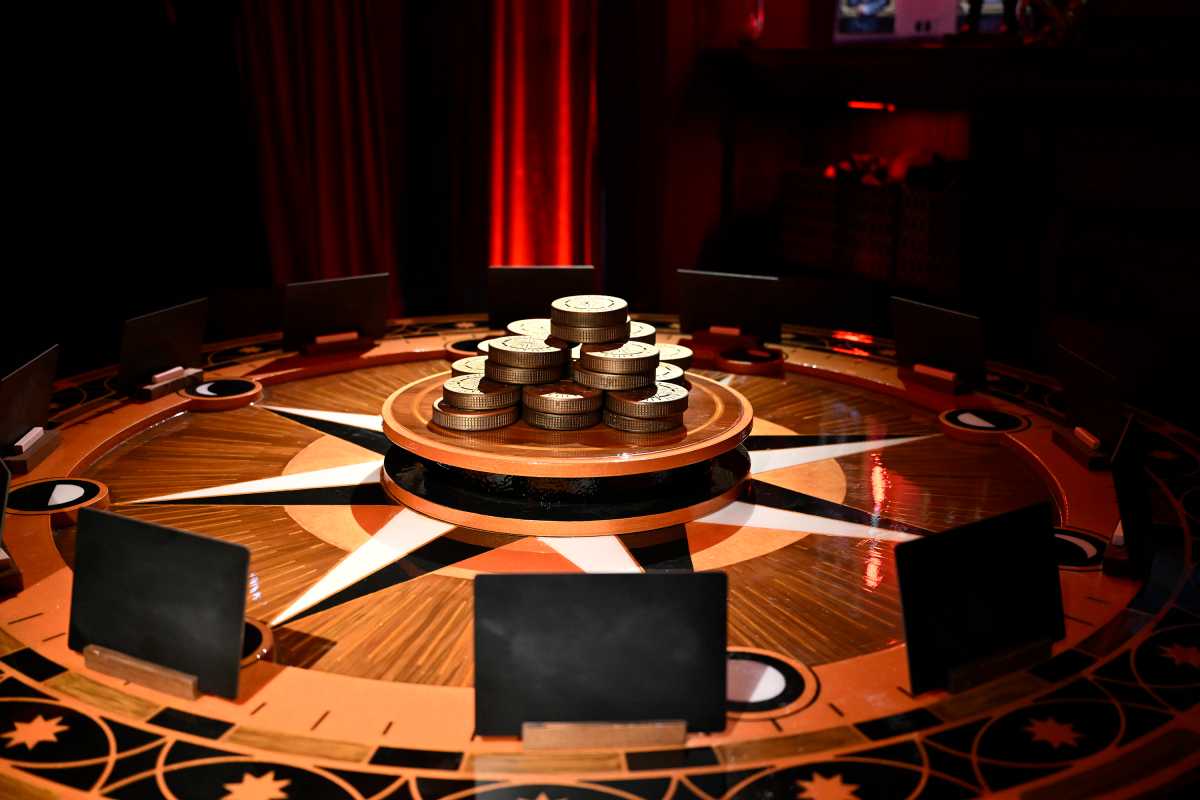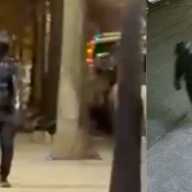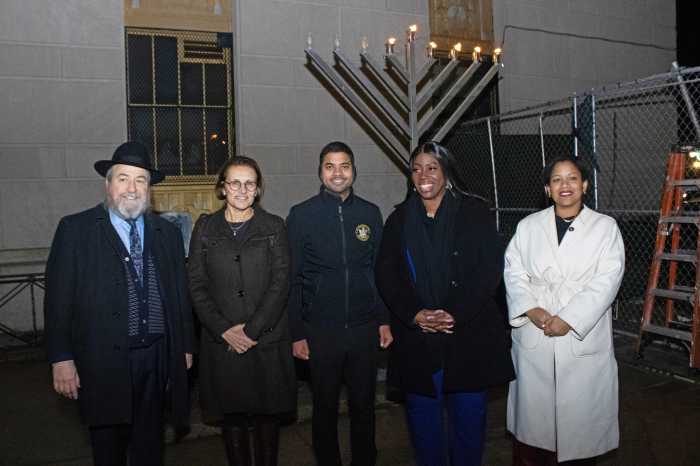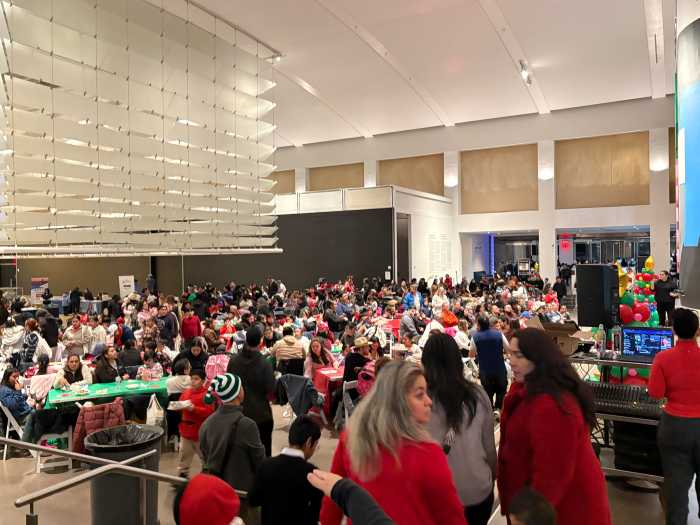By Albert Amateau
Full of pride and joy, members and friends of Congregation Chasam Sopher celebrated the completed first phase of the restoration of the 150-year-old synagogue at 6 Clinton St. on Wednesday, Sept. 8 and the beginning of a 12-month writing of a new Torah scroll.
The gathering included government and business luminaries, rabbis of several Lower East Side Orthodox synagogues, neighborhood preservation advocates and long-time members of the congregation.
For Eugene Weiser, president of the congregation, whose late father Morris Weiser was responsible for reviving a dwindling group of worshippers 35 years ago, it was especially poignant.
“My father would have loved to see this,” he said, overcome for a moment with emotion, “Him and my brother are watching from upstairs.”
Hank Sopher, the developer who became Congregation Chasam Sopher’s main benefactor in 1976, recalled how he was inspired by Morris Weiser’s devotion. Sopher is funding the complete restoration of the synagogue, expected to be completed next year, and is also paying for the writing by hand of a new scroll.
Sopher said he had discovered that his family is descended from the 19th century rabbinical scholar Moshe Schreiber, for whom the congregation was named in 1891. Schreiber in German means “scribe,” which translates into Hebrew as Sopher. Moshe Schrieber was popularly known as Chasam Sopher.
Originally built in 1853 by a German Reform Jewish congregation that moved Uptown in 1891, the Clinton St. building was then acquired by two orthodox congregations that merged to form Chasam Sopher.
Hank Sopher proudly told the gathering on Wednesday that even during the 1970s when the congregation was struggling and the building was decaying, the synagogue was secure. “We haven’t had a break-in in 35 years,” he said. “Partly because of our wonderful police, and partly because of the people who live here and watch out for the building because Chasam Sopher is such a respected part of the neighborhood.” For that reason, Sopher said, the restoration project will include an adjacent neighborhood park open to the public.
Irma Lobell, a resident of Penn South in Chelsea, became involved with the congregation because she worked for Hank Sopher 35 years ago when the synagogue was struggling. “Morris Weiser used to pull them off the street for a minyan [a quorum of 10 men required for a service],” she recalled, adding that Eugene Weiser was his father’s constant companion.
Rabbi Azriel Siff conducts daily prayers at the synagogue where minyans are always on hand these days. Siff introduced Rabbi Shmuel Wolfman, the sopher (scribe) who will write the scroll which will be used in services at the synagogue.
Wolfman, 54, a father of seven children and grandfather of three, lives in Manhattan and is one of about 60 sophers in the U.S. and about 300 in the world. A secular Jew born in Russia, Wolfman emigrated at the age of 20 to Israel with his wife.
“I didn’t know anything about religion,” he recalled. “I wanted to go to Calcutta to study yoga, but it took three years for exit visas and by that time we had a baby, so we went to Israel,” he said. In Jerusalem, he met a Russian-speaking rabbi, Yitzchak Zilber, who influenced him. To learn a trade to support his family, he apprenticed himself to a great Jewish calligrapher, Rabbi Abraham Snee.
Wolfman said he became interested in the craft of the sopher “because of its beauty — its energy.”
The scroll of the first five books of the Bible is written according to rules proscribed by oral tradition. The ink is made from the outer bark of a wasp’s nest, the quill from a goose or turkey feather. “Mostly turkey because goose quills are hard to find,” said Wolfman. The velum upon which it is written is made from the skin of a calf slaughtered for food.
Wolfman will do the writing in the downstairs sanctuary of the building for several hours each day except for the Sabbath and holidays. The synagogue will be open to people who want to see scribe writing the scroll. Visitors who want one of the 304,805 letters of the Torah inked in their honor will be asked for donations, which will go towards the restoration of the 1853 building.
The celebration on Wednesday attracted such luminaries as Assembly Speaker Sheldon Silver, District Attorney Robert Morgenthau, City Councilmember Alan Gerson, Assemblymember Richard Brodsky of Westchester, Judge Jerome M. Becker and Howard Rubenstein, founder of Rubenstein Associates.
WWW Downtown Express
Read More: https://www.amny.com/news/international-terror-experts-speak-at-hospital-forum/
